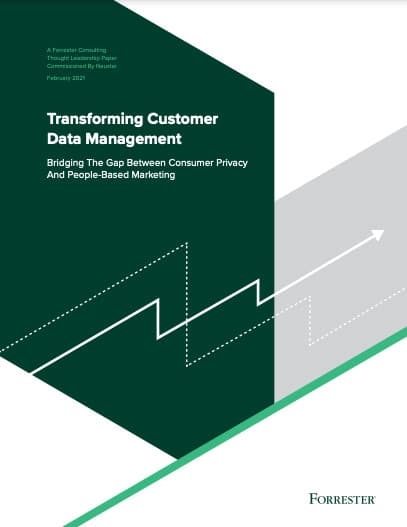Pinterest creators, involving MOPs in decisions: Monday’s daily brief
Plus Amazon ads deliver for enterprise brands
In an article published earlier this year, Jessica Rich, former director of consumer protection at the Federal Trade Commission, observed that Congress’s failure to act on some basic privacy recommendations made by the FTC in 2000 led to two decades of “massive data breaches, virtually unlimited data collection online and in our public spaces, huge platforms that know everything about us and dominate the marketplace, and algorithmic predictions that create risk of bias and loss of opportunity.”
She hardly over-states the situation, and it’s not pretty. One might call it a “Wild West” — and another bad outcome is that it’s starting to be policed in inconsistent ways by local sheriffs. The CCPA protects Californian consumers; now we have the CDPA protecting Virginian consumers in tangibly different ways; and Hawaii, Maryland, Massachusetts, New York and North Dakota have their own privacy regulations.
Imagine a federal law that would allow brands to understand, nationwide, how they can and cannot communicate with consumers, and how to manage the data they gather. Good for brands, good for consumers. But is it good politics? Because for Congress to act, that’s what really matters.
Kim Davis
Editorial Director
Pinterest powers up creators during stressful times
In addition to helping its audience navigate a stressful time, Pinterest has also taken steps to grow and strengthen its community. Often, they have done so to distinguish themselves from other platforms like Instagram or YouTube, instead of following standard social media practice. On Pinterest, there is following and sharing, but for years they’ve emphatically denied that they are social media. They define themselves as visual discovery.
What they call themselves isn’t as important as what they help members of their community do. And this is important for marketers because last summer Pinterest topped 400 million monthly active users. It’s growing among millennials and Gen Zers, including a 50% boost year-over-year for men on the platform.
Strengthening Pinterest’s creator base powers the entire community and makes it even more valuable to brands. The moves Pinterest is making in this direction show how users and their preferences have changed.
At the end of September, Pinterest introduced Story Pins, the ability for creators to tell multi-page stories. This beta version also included a new creator profile and analytics tools to track performance. Pinterest is also giving creators access to analytics across the community through its trends tool.
At the heart the new Story Pins format is a wager against how other digital stories are told. For instance, the stories on Instagram expire after 24 hours. On Pinterest, they stay where they are. This feature leverages the evergreen value in Pinterest content, allowing Pinners to discover and rediscover what might have been overlooked in the past.
Ask MOPs before buying the shiny new object
MOPs maven and Martech Architect at Slack Sara McNamara kicked off a great discussion on LinkedIn by slamming the practice of buying marketing technology without consulting marketing operations/technologists early in the game. Among other things, according to Sara, it leads to: wasting time, wasting money, creating tons of tool redundancy, and repelling real martech talent.
Deborah Mayen, Head of MOPs at Molex, added: “Ironically, it also ends up discrediting MOPs. We’re not consulted when buying it and aren’t given the opportunity to review whether it’ll actually meet our needs (oftentimes it’s because no one wants to be told that the shiny new object does not necessarily equate to ROI). Then we’re expected to ‘make it work’.”
Then there’s the practical problem of exercising governance over tech purchases. Remember ‘shadow IT’? It’s still with us, says Sara: “(W)e have so much tech + humans wrapped around company credit cards and procurement and yet businesses still can’t seem to figure out how to block shadow IT purchases.”
Over half of enterprise brands see a 7X return on Amazon advertising
With COVID-19 lockdowns and quarantines forcing us all to stay home, American consumers spent 44% more online in 2020 than in 2019. The pandemic accelerated the adoption of Amazon as an e-commerce platform for many brands, and thus Amazon Advertising.

Feedvisor surveyed over 1000 enterprise to Fortune 500 companies about their e-commerce strategies during the pandemic and found that most found success with Amazon and the in-platform advertising:
- 78% of brands surveyed are currently selling on the platform (up from 55% in 2019)
- 88% of brands use Amazon’s advertising platform (up 21% from 2019)
- 51% of brands said they saw a return of 7x or more (39% of brands see between a 4x–6x return)
But it wasn’t all rainbows and sunshine: “While Amazon continues to permeate brands’ strategies and grow in significance, other e-marketplaces are entering the mix. In the report, brands both on and off Amazon share similar sentiments around the challenges of operating on the platform, including increased competition and the inability to control the customer experience,” according to the report.
Why we care. Along with e-commerce platforms like Shopify, many brands leveraged e-marketplace when the pandemic struck. It’s critical that companies capitalize on both the advantage these platforms provide and their advanced technology to drive more traffic to their product listings, create a personalized online shopping experience, and tailor their advertising campaigns to their target audiences. “The brands that embrace the digital revolution of retail, invest in data and technology solutions, and optimize their presence on Amazon and e-marketplaces will be well-positioned for long-term growth in the inevitable new normal,” said Victor Rosenman, founder and CEO, Feedvisor.
Brands need more control over customer data strategies
Brands are struggling to bridge the gap between consumer privacy and people-based marketing. That’s the takeaway from a new Forrester report commissioned by analytics and identity platform Neustar.

Based on a survey of almost 500 respondents in privacy, marketing, and analytics
teams at US enterprise organizations, the report observed:
- Brands are anxious about the future state of their customer data responsibilities and capabilities — concerns promoted by legislation, browser and device protection, and the walled gardens;
- There is an absence of shared strategic thinking between teams responsible for privacy, data, and marketing;
- Brands claim to have mature privacy strategies, but less mature personalization and cross-channel marketing strategies.
The reports recommendations include seeking alignment between privacy, data and marketing strategies, and auditing the likely impact of data deprecation threats (e.g. the deprecation of third-party cookies).
Why we care. Of course, Neustar also invites a focus on non-cookie-based universal identifiers, because that’s one of Neustar’s offerings. Still, the report highlights a major rift between privacy practices, on the one hand, and data and marketing practices on the other. Brands have to get privacy right or face legal repercussions. But it looks like the stampede to ensure data is collected in compliant ways has left the management and use of the data lying in the dust.
Zyp TV acquired by Sinclair
Local-focused OTT programmatic platform ZypTV announced on LinkedIn that they have been acquired by longtime partner Sinclair Broadcast Group. As more viewers “cut the cord” and drop traditional linear TV bundles, advertisers are looking to gain more impressions by placing ads on streaming video. This acquisition allows Sinclair, the second-largest broadcast station operator in the U.S., to get more involved in streaming versions of local programming.
Presumably this means Sinclair is stepping into the future. However, there are still enough linear TV viewers in the U.S. to warrant a separate world within over-the-air TV. You might download an app dedicated to your local news broadcast, but at the same time you might also hook up your new smart TV to the latest high-tech “rabbit ears,” called NextGen TV.
Sinclair is having it both ways. Just last week, Sinclair’s President & CEO Chris Ripley named NextGen TV as a main reason for optimism in 2021.
Why we care. Marketers need to cover all their bases. In a fragmented hybrid TV/video environment, they have to leverage the best intelligence to place local advertising effectively. And this means not only using data to hit the most valuable demos and segments for a particular brand, but also using the right data to make sure they’re not missing key customers watching the same programming in a different format the advertisers didn’t buy. The silver lining is that maybe consolidation among linear broadcasters and adtech players like ZypTV could bring greater consolidation for ad buyers, or maybe even for the consumers watching the shows. How much longer will TV watchers endure this chaos before pulling the plug entirely? We’ll have to stay tuned.
Quote of the day
“For the first time in 12 months, I made my way into an office building this morning. Waking up and getting dressed to go in to work was thrilling, but I almost forgot how to do it. I forgot how as a Minnesotan, I need to start my car so it can warm up. I forgot that I have to pack a bag with all the stuff I need for the day. I almost left my coffee on the counter.” Morgan Short, Global Content Strategy Manager, Optimizely.
Marketing Land – Internet Marketing News, Strategies & Tips
(46)


